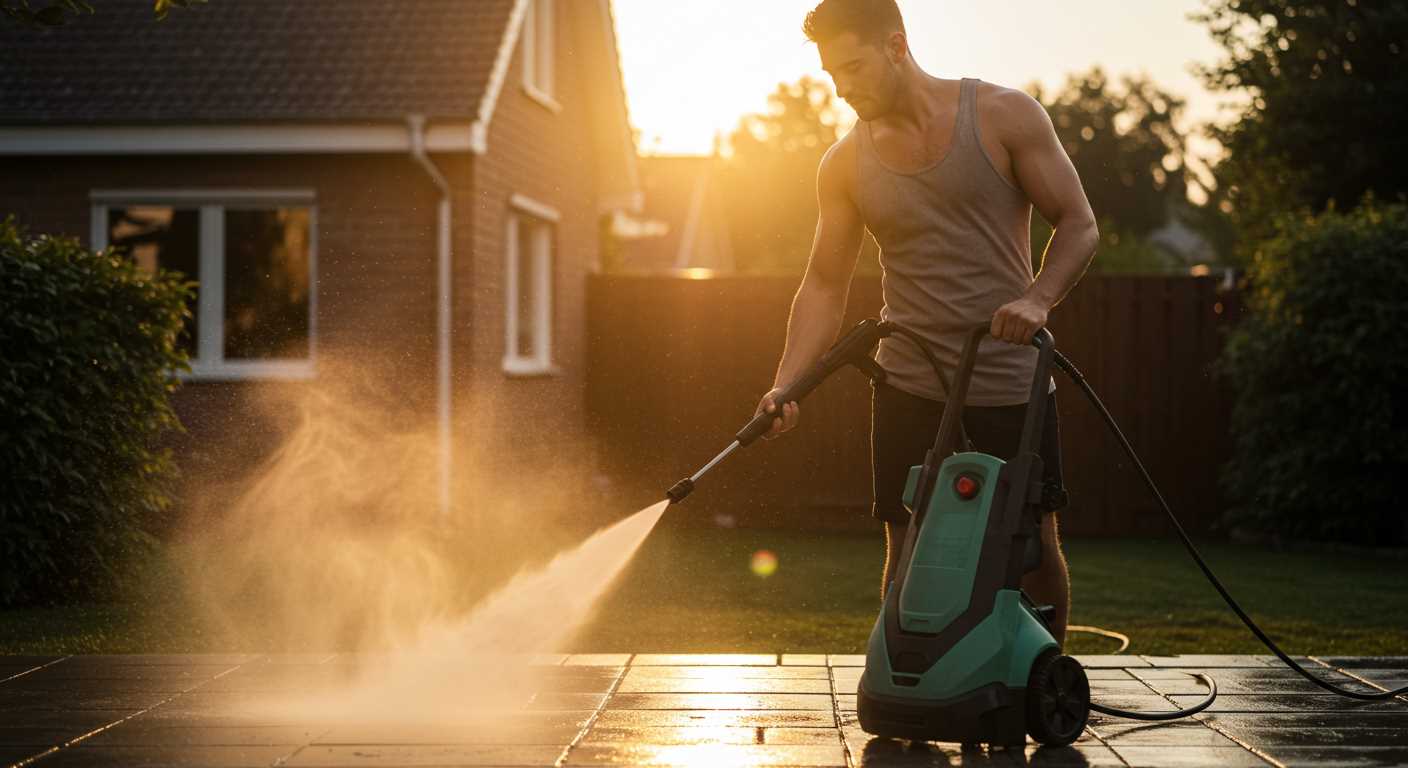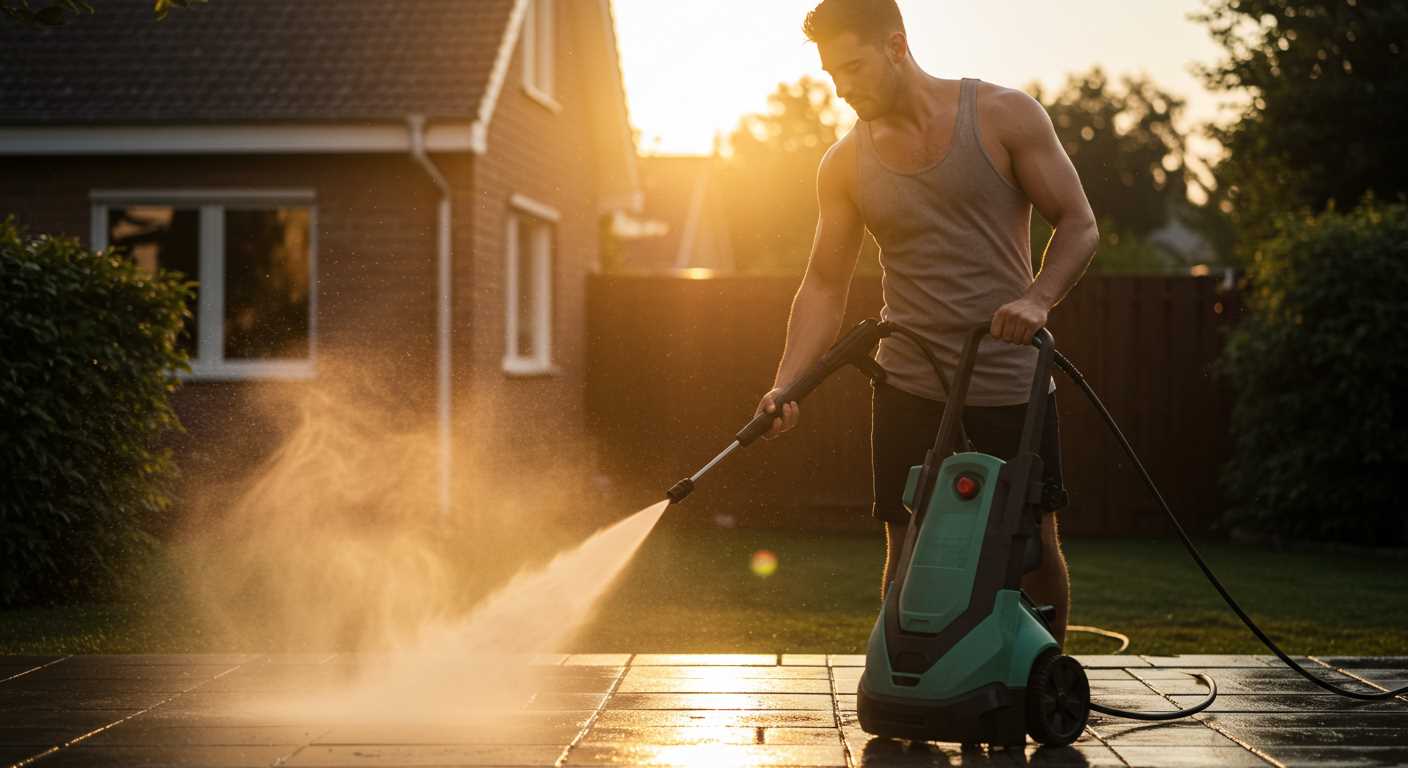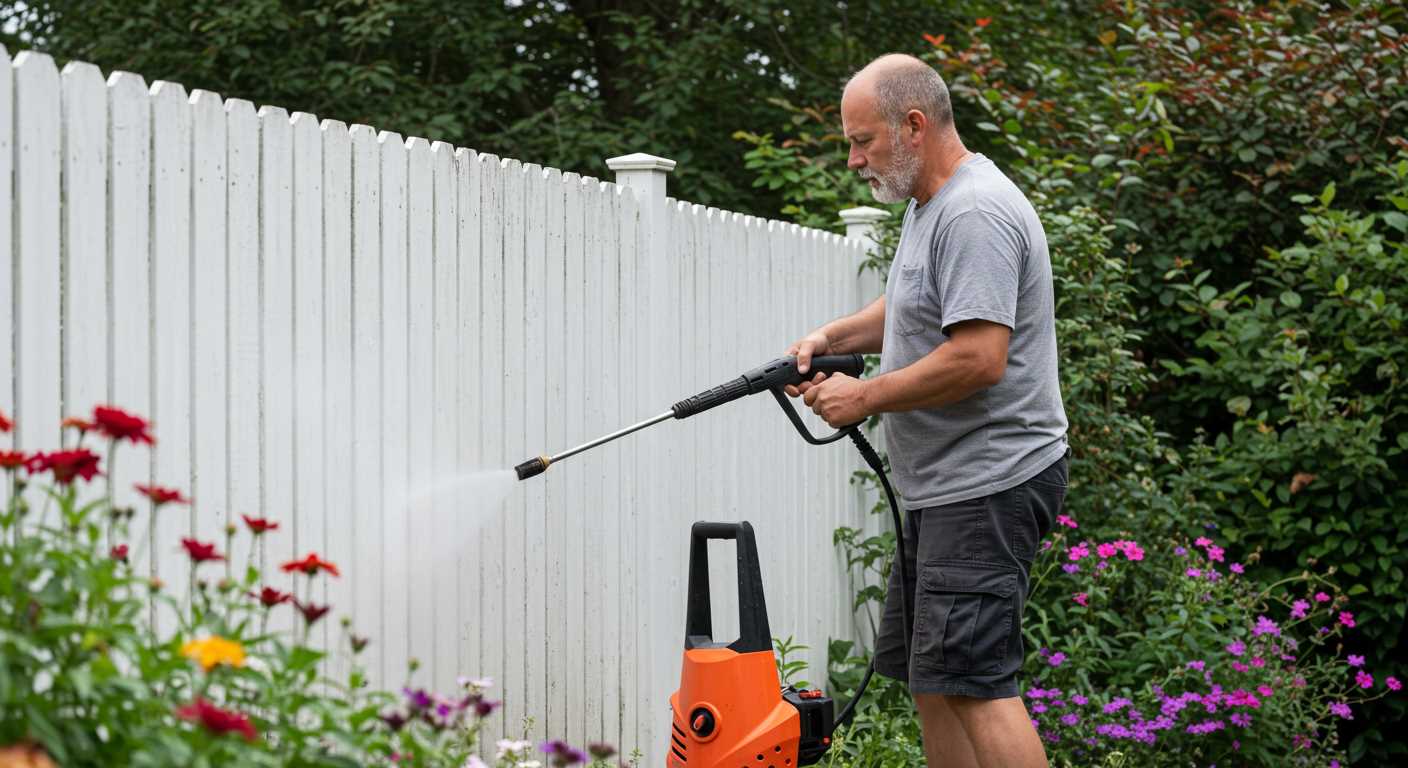




Directing a high-pressure cleaning device into a sewer access point is not advisable. The confined space, combined with the force of the water, can create hazardous conditions. High-pressure systems are designed for outdoor surfaces, not for enclosed environments where debris and contaminants may be present.
In my years of experience, I’ve seen technicians attempt this method with varying degrees of success. However, the risks often outweigh the potential benefits. The water pressure can dislodge more than just dirt; it can propel harmful substances into the air, posing health risks. For instance, a colleague once faced an unexpected backflow situation, resulting in a costly cleanup and significant downtime.
Instead, consider alternative methods for cleaning sewer systems. Manual cleaning or using specialized equipment designed for such environments ensures safety and effectiveness. If pressure cleaning is necessary, it’s best to consult with professionals who understand the complexities of sewer maintenance.
Understanding the Risks of Using a Pressure Washer in a Manhole
Engaging in cleaning tasks within a confined space presents specific dangers. Operating high-pressure cleaning equipment in a sewer access point can lead to severe complications. The high force can cause water and debris to surge back, creating hazardous conditions. In my experience, even a small miscalculation can result in significant injury or damage.
Potential Hazards
Several risks arise from this practice:
| Risk | Description |
|---|---|
| Backflow | Water and waste materials can be propelled back towards the operator, posing a contamination risk. |
| Limited Visibility | Working in dark, confined spaces can impair visibility, increasing the likelihood of accidents. |
| Electrical Hazards | Moist environments may expose electrical components, leading to potential electrocution. |
| Inhalation Risks | Using powerful equipment can aerosolize harmful substances, which can be inhaled. |
Safety Recommendations
Taking precautions is paramount. Here are some guidelines based on practical experience:
- Always wear appropriate personal protective equipment, including gloves, goggles, and respirators.
- Ensure the area is well-ventilated to mitigate inhalation risks.
- Utilise a pressure cleaning device designed for such environments, with features to prevent backflow.
- Consider alternative cleaning methods that do not involve high-pressure tools in confined spaces.
These measures significantly reduce the risks associated with cleaning in such environments. In my years of testing various models, I’ve found that safety should always come first, regardless of the task at hand. Always assess the situation before proceeding.
Necessary Equipment for Pressure Washing in Confined Spaces
For tackling grime in tight spots, the right tools make all the difference. A compact, portable cleaning unit with adjustable pressure settings is paramount. Opt for models that are lightweight, as ease of movement is crucial in restricted areas. I recall a job where we had to clean a sewer shaft. The standard unit was cumbersome, so we switched to a more agile version, which saved us time and effort.
Accessories to Enhance Safety
Invest in a quality safety harness and helmet. During one project, a co-worker slipped while reaching into a narrow shaft. It highlighted the need for proper gear. A sturdy harness keeps workers secured, and a helmet protects against falling debris. Additionally, goggles and respirators are non-negotiable; they shield against harmful particles and ensure clear visibility in low-light conditions.
Specialised Nozzles and Hoses
Utilising specific nozzles can significantly improve cleaning efficiency. A rotating nozzle is particularly effective in confined spaces. On one occasion, we faced stubborn blockages that a standard nozzle couldn’t tackle. Switching to a rotating head changed the game, making quick work of the buildup. Long, flexible hoses also provide better reach without needing to reposition the unit constantly, which is a real advantage in cramped environments.
Safety Precautions to Take Before Entering a Manhole
Before entering any confined space, including a manhole, ensure proper safety measures are in place. First, conduct an atmospheric test to check for harmful gases such as hydrogen sulphide or methane. Use a gas detector to assess air quality. If there are any toxic levels, do not proceed.
Wear appropriate personal protective equipment (PPE). This includes a hard hat, gloves, safety goggles, and a respirator, especially if there’s a risk of inhaling hazardous substances. A reflective vest is also advisable for visibility, particularly in low-light conditions.
Establish a Safe Entry Protocol
Implement a buddy system. Always have someone on the surface monitoring your activities and ready to assist in an emergency. This person should also be trained in rescue procedures and equipped with communication devices to maintain contact.
Ensure the workspace is well-ventilated. If possible, use fans or blowers to circulate air. Having a reliable light source is crucial for visibility; consider using explosion-proof lighting to avoid igniting any flammable gases.
Prepare for Emergencies
Before descent, have a first aid kit readily available and ensure that the individual on the surface knows how to use it. Familiarise yourself with emergency exit routes. In case of a sudden crisis, being aware of the quickest way out can save lives.
Familiarise yourself with equipment. If using a pressure washer that draws water from a bucket, ensure it’s suitable for confined spaces and operates correctly. Regular maintenance checks can prevent malfunctions. Always verify the water source before starting your task.
Best Practices for Pressure Washing Inside a Manhole
Always ensure that the confined space is adequately ventilated. Before starting any cleaning operation, I conduct an air quality assessment. The presence of toxic gases can be a hidden danger. If ventilation fans are available, I set them up to circulate fresh air.
Positioning the cleaning apparatus at the right angle is critical. I find that a 25-degree nozzle allows for effective cleaning without causing damage to surfaces. Adjusting the distance from the surface helps control the intensity of the stream. I usually maintain a distance of around 12 to 18 inches to avoid excessive force.
Utilising a harness with a lifeline system is non-negotiable. I’ve had instances where a colleague underestimated the risks. A reliable safety harness ensures that, in case of an emergency, you remain secured and can be pulled to safety without additional risk.
Wearing appropriate personal protective equipment is non-negotiable. I always wear rubber gloves, sturdy boots, and protective eyewear. This combination protects against splashes and debris that can be propelled during the cleaning process.
Before commencing, I make sure to remove any debris from the access point. I’ve encountered situations where loose items obstructed the flow of water, reducing efficiency. Clearing the area ensures that the washout process is smooth and effective.
Use a spotter outside the confined space. I often have a team member stationed above to monitor conditions and provide assistance if needed. This extra set of eyes can be invaluable in maintaining safety.
After finishing the task, I thoroughly inspect the area for any residual waste or hazards. Cleaning the equipment after use not only prolongs its lifespan but also prevents cross-contamination. I make it a habit to flush the hoses and nozzles to remove any debris.
Lastly, I document the process and any observations. Keeping a record helps improve future operations and serves as a reference for others. It’s always beneficial to learn from each experience to enhance safety and efficiency in subsequent tasks.
Legal Regulations Surrounding High-Pressure Cleaning in Confined Spaces
Before engaging in high-pressure cleaning within confined spaces, such as sewers or utility access points, it’s paramount to be aware of specific legal guidelines and regulations. Local laws vary, but many jurisdictions require permits to perform such tasks to ensure public safety and environmental protection.
For instance, in the UK, the Health and Safety at Work Act mandates that any work carried out in confined spaces must adhere to strict safety protocols. This includes risk assessments and the implementation of control measures to mitigate hazards. Additionally, the Confined Spaces Regulations 1997 outline necessary precautions, demanding that workers receive appropriate training and understand emergency procedures.
Furthermore, environmental regulations may restrict the discharge of wastewater or contaminants resulting from high-pressure cleaning. It’s essential to consult local environmental agencies to ensure compliance with waste disposal regulations. Fines for non-compliance can be substantial, making it vital to stay informed.
For those looking to optimise their equipment for cleaning tasks, I recommend considering the best air compressor for drying bike gears. Having the right tools can significantly enhance efficiency and effectiveness while adhering to safety standards.
Always remember, understanding and following legal requirements can prevent not only legal repercussions but also ensure the safety of all involved. Prioritising compliance fosters a safer work environment and protects your reputation in the industry.
Alternative Methods for Cleaning Manholes Without a Pressure Washer
Using a traditional cleaner, such as a high-powered jet, might not be an option for confined spaces. Instead, consider employing a vacuum extraction system. This method effectively removes debris and liquids while ensuring the area remains safe for workers. The suction power can handle solids and sludge without causing a mess.
Using Manual Tools
Manual cleaning tools can be surprisingly effective. A combination of shovels, brooms, and scrapers can remove stubborn dirt and blockages. Equip your team with long-handled tools to minimise exposure to hazardous substances. It’s important to wear protective gear, including gloves and masks, when dealing with potentially harmful materials.
Chemical Cleaners
Another option is utilising chemical agents designed for cleaning. These solutions can break down grease, grime, and other buildups. Always follow the manufacturer’s instructions regarding application and safety measures. Ensure proper ventilation and consider the environmental impact before using chemicals; biodegradable options are preferable for underground environments.
Common Problems Encountered When Using a Pressure Washer in Manholes
One of the most frequent issues faced while cleaning in confined spaces is water accumulation. High-pressure systems can create significant splatter, leading to puddles that hinder visibility and can lead to slips or falls.
- Limited Space: The confined nature of manholes restricts movement, making it challenging to manoeuvre equipment. This can result in uneven cleaning or missed spots.
- Electrical Hazards: If any electrical equipment or wiring is present, water exposure poses a risk of electrocution. Always check for live circuits before commencing work.
- Debris Dispersal: High-pressure jets can send debris flying, posing risks to both the operator and bystanders. Proper barriers or shields should be used to contain materials.
- Equipment Malfunction: Using machinery in damp conditions can lead to mechanical failures. Regular maintenance and checks are crucial to avoid breakdowns.
- Drainage Issues: If the drainage system is already compromised, introducing additional water can worsen the situation, causing backflow or flooding.
- Health Risks: Exposure to hazardous materials, including sewage or chemicals, can occur. Personal protective equipment (PPE) is non-negotiable.
- Noise Levels: The sound generated can be substantial, leading to hearing damage if proper ear protection is not worn.
In my experience, the best approach is to assess the specific conditions of each site before commencing any cleaning operation. Being prepared for potential challenges not only enhances safety but also improves the overall efficiency of the task at hand.
When to Call a Professional for Manhole Cleaning
Engaging a specialist for cleaning subterranean access points is advisable in several scenarios. If the blockage is severe and beyond a simple clean-out effort, it’s time to seek expertise.
- Severe Blockages: When debris is entrenched or roots have invaded, a professional’s tools and experience are necessary.
- Complex Systems: If the network involves multiple junctions or is interconnected with other systems, it’s prudent to hire an expert who understands the intricacies.
- Health Concerns: If hazardous materials or toxic substances are suspected, immediate professional intervention is required to ensure safety.
- Insufficient Equipment: Lacking the right machinery or manpower can hinder effective cleaning. In such cases, it’s wise to call in a team that has the appropriate resources.
- Time Constraints: Projects with tight deadlines benefit from professional services, as they can complete tasks more efficiently than a DIY approach.
- Compliance Issues: Local regulations might necessitate professional handling to avoid legal issues, especially in urban areas.
In my career, I encountered numerous situations where attempting to tackle a problem alone led to complications. One particular incident involved a construction site where the drainage system was heavily compromised. Despite my attempts with a high-performance device, the issue persisted until a professional crew arrived with specialised equipment and expertise, resolving the problem swiftly.
Assessing the situation critically can save time and resources. If it feels overwhelming, reaching out for professional assistance is the best course of action.


.jpg)

.jpg)


